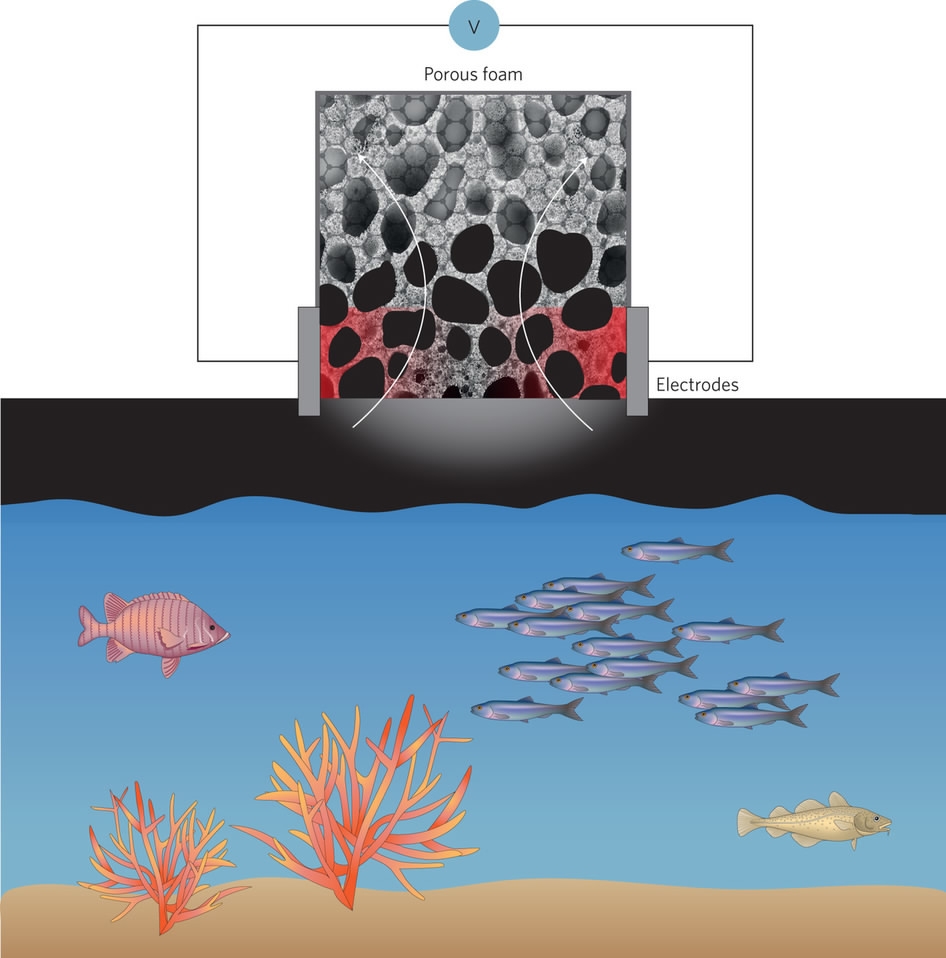Water splashed on the table can be absorbed by a sponge, but what happens to crude oil spills in the ocean?
A research team led by Professor Yu Shuhong from the School of Chemistry and Materials Science at the University of Science and Technology of China, has found that a Joule-heated graphene-wrapped sponge (GWS) enables the fast clean-up of viscous crude-oil spills.
The result was published in the journal Nature Nanotechnology on April 3,2017. It is believed to be the most advanced technique so far for absorbing crude oil spills in the ocean.

Diagram of the working process of the graphene-wrapped polymer sponge (GWS). / Nature Photo
Joule heating is the process by which the passage of an electric current through a conductor produces heat.
Hydrophobic oil sorbents, or oil sorbents that cannot be mixed with or dissolved in water, as well as oleophilic oil sorbents, or oil sorbents that absorb oil easily, have both been demonstrated as promising candidates for oil-spill remediation.
But the absorption speeds of these oil sorbents for viscous crude oil are rather limited, especially for spilled crude oil on the sea surface. The oil's viscosity will grow rapidly within only several hours, and these materials are unable to absorb the flowing oil fast enough.

Schematic illustration of the fabrication processes of GWS / Nature Photo
By introducing Joule heating, the oil viscosity decreased promptly, so that the absorption time of oil was reduced by 94.6 percent compared with that of non-heated GWS.
The crude oil absorbed can also be recycled for reuse, according to Yu. Due to the characteristics of graphene, the same GWS can also be used more than once.
In situ Joule self-heated sorbent design invented by Chinese scientists will promote the practical application of hydrophobic and oleophilic oil sorbents in future clean-up operations on viscous crude-oil spills.
Related story:
899km










